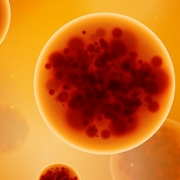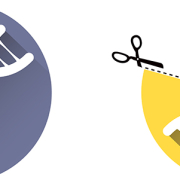Achromatopsia gene therapy partially restores children’s colour vision
A new gene therapy offers hope for young people affected by a rare form of complete colour-blindness
Gene therapy trials for colour vision deficiency (commonly known as colour blindness) caused by achromatopsia have improved colour vision in two children, researchers at University College London (UCL) have claimed. The results of the clinical trial, which was undertaken in collaboration with Moorfields Eye Hospital, were published in the August 2022 edition of Brain.
Achromatopsia is a rare inherited disease that causes sensitivity to bright light and partial or total loss of colour vision. It is different to more common types of colour vision deficiency, which make it difficult to tell some colours apart.
How do colour vision deficiencies work?
The retina, found at the back of the eye, has two types of light-sensitive cells: rods and cones. Rod cells respond to overall light level and work better in low light conditions. Cone cells come in different types, with each type responding to different wavelengths of light.
Rod and cone cells convert light into nerve signals, which are sent down the optic nerve to our brain. Our brain then interprets the rod and cone cells’ signals into something meaningful – for example, it uses them to distinguish between colours.
Red-green and blue-yellow colour vision deficiency, the two most common types, are caused when one of the cone types is absent or not functional. This means that it is difficult for people with these conditions to tell the difference between some colours. For example, people with red-green colour vision deficiency have trouble distinguishing between shades of red, yellow and green.
People with achromatopsia, however, cannot see colour at all.
Genetics of achromatopsia
Achromatopsia, according to Moorfields Eye Hospital, affects about 1 in 30,000 people and has so far been associated with six genes, with variants in CNGB3 and CNGA3 causing about 75% of cases.
The CNGB3 and CNGA3 genes code for proteins that are small but crucial parts of a much larger molecular ‘channel’ that, through the presence or absence of light, sets up the environment needed to send a nerve signal to the brain. When this channel doesn’t work, the cone cells can’t reliably send nerve signals to the brain. This means the patient has (among other things) poor to no colour vision.
The good news is that because the cone cells are present, and the issue is due to the molecular channel not working as it should, there is an opportunity to use gene therapy to get it going again.
Gene therapy trial findings
The gene therapies conducted as part of the recent UCL trial were targeted to restore function of either CNGA3 or CNGB3. The gene was delivered into the retinal cells of four children between 10 and 15 years old with confirmed CNGA3 or CNGB3 gene variants. This was achieved using a made-safe adeno-associated virus, a delivery mechanism also used in other ophthalmic gene therapies that works by trafficking a gene into the cell’s nucleus, which then takes on the role of the patient’s own non-functioning gene.
The therapy has not yet been trialled in adult patients, but researchers believe that the key to its success lies in the adaptability of the brain, which is especially flexible in early years. This explains why the trial subjects’ brains were able to successfully make use of the new nerve signals.
“In our trials, we are testing whether providing gene therapy early in life may be most effective while the neural circuits are still developing,” said UCL’s Professor Michel Michaelides, co-lead author on the paper.
To evaluate the colour vision of the patients who received the gene therapy, researchers compared their results to those of child and adult patients with untreated achromatopsia, and to children with normal colour vision. Excitingly, two of the four trial participants with achromatopsia recovered some colour vision.
“Our study is the first to directly confirm widespread speculation that gene therapy offered to children and adolescents can successfully […] evoke visual signals never previously experienced by these patients,” said UCL associate professor Dr Tessa Dekker, lead author.
This research comes after an announcement in 2019 that a new gene therapy for vision loss as a result of inherited retinal dystrophy had been approved by NICE for use in the NHS.
The eye is immune-privileged, meaning that immune responses are less severe than in other organs. It is also accessible, making its cells promising targets for gene therapies. Clinical trials like this one offer hope for ophthalmic patients with a genetic cause of disease, particularly when therapies can be undertaken early in life.
–









